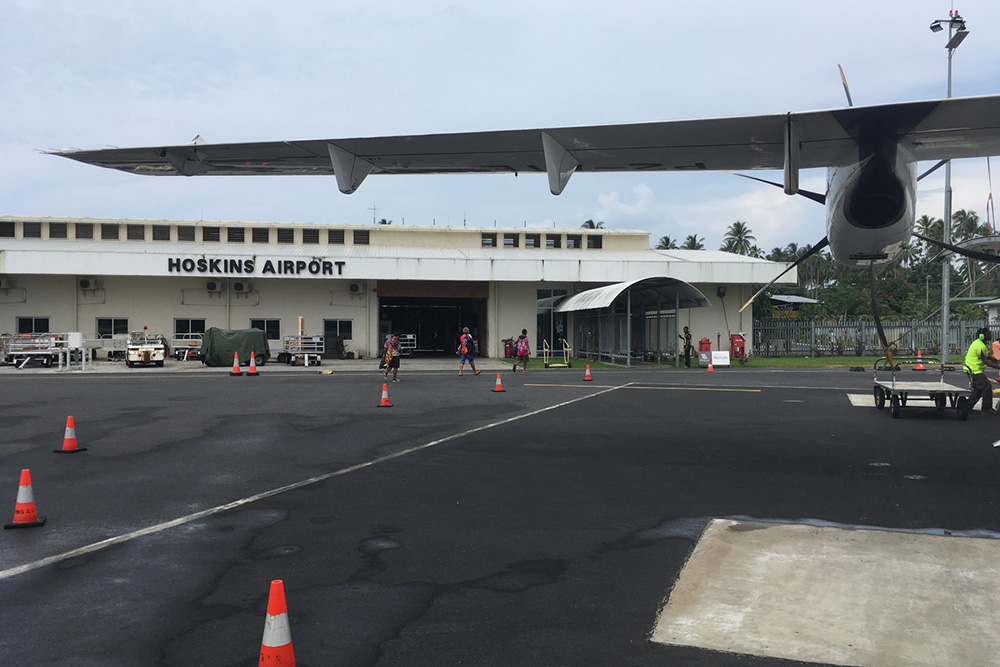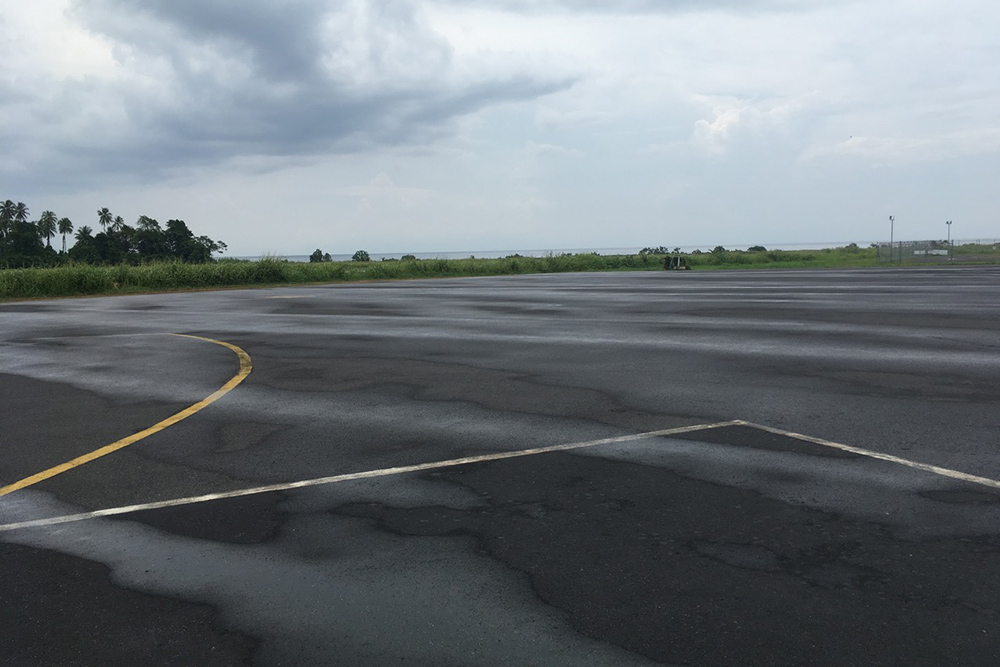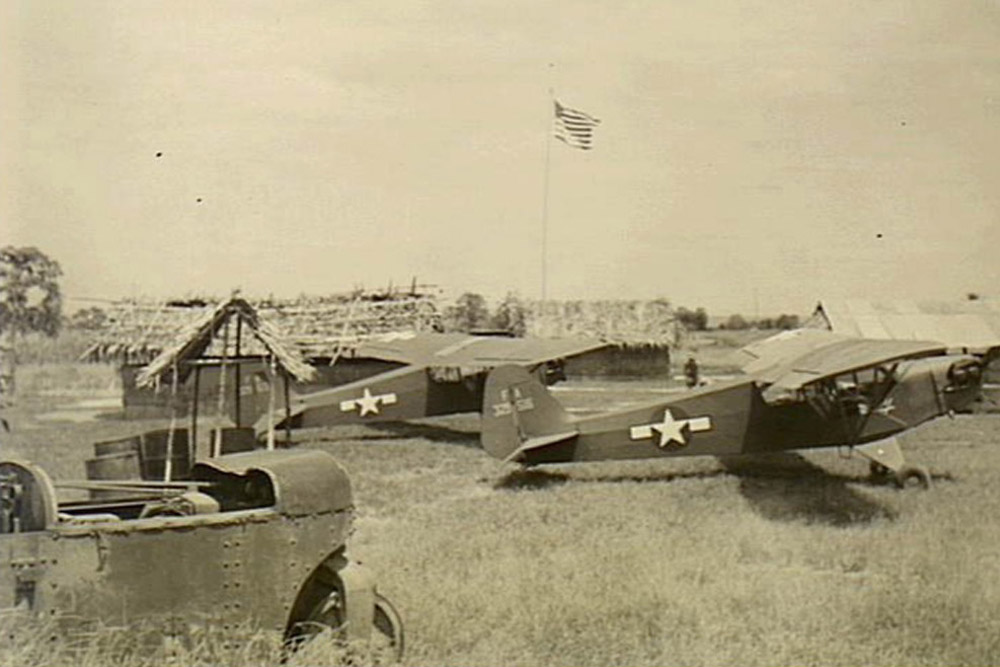Hoskins Airport (Gabubu Field)
Hoskins Airport
Originally built a Japanese airfield in 1943, it was used as the forward base by the Imperial Japanese Navy during the course of World War II. The airfield was attacked by USAAF elements between September 19, 1943 and March 26, 1944. Marines captured the airfield in early May 1944. A number of aircraft were captured reasonably intact, including a D3A2 Val # 82-224 and D4Y1 Judy # 01-070.
New Britain Campaign
The First Marine Division, reinforced, landed at Cape Gloucester, New Britain, on December 26, 1943, and the campaign to seize the airfield there lasted until April 1944, although most of the heavy fighting on the western side of the long island was over in January.
The 1st battalion, First Marine Regiment, took the airfield just after D-Day. The assault was led by C Company, 1st battalion, commanded by Capt.
Nikolai Stevenson, who later said: "We spent the first night on the island standing in a swamp just inland from the landing beaches. The maps had indicated a 'damp flat'. And then we formed up and swept out of jungle, taking the airfield from the Japanese. We thought that might be all for us on New Britain, but we ended up staying there another four months, endlessly patrolling the fetid jungle, fighting sporadic engagements in the horrible weather."
On New Britain, the Marines had to contend with relentless rain and jungle conditions, as they pushed the Japanese back toward Rabaul, on the eastern extreme of New Britain.
Military historians have long believed that the campaign on New Britain was one of the most efficient in the Pacific War, in that the Marines achieved all their objectives and suffered relatively few casualties in their operations.
***
Getting to Cape Gloucester verges on the impossible, as volcanic ash from Mt. Talawe (which loomed over the battlefields) has closed down the the airstrip at the cape and no inter-island ferries call at the village of Gloucester.
There is the possibility, from a hotel or guest house in Hoskins - Kimbe, the capital of West New Britain in the center of the island, to hire a banana boat to take you along the coast to Cape Gloucester, but in all, one way, that could well be a ten-hour voyage along the coast. The are no roads to Cape Gloucester.
Outside of Kimbe, near Talasea, is the world famous Walindi Plantation Resort, famous for scuba diving tours and deep sea fishing, and for a (high) price, I am sure, it could help arrange passage to Cape Gloucester. But it’s not a sure thing, even from there.
Part of the reason no roads cut through the jungle on New Britain is because of its rain forest conditions and thick jungle, outside of the intermittently spaced towns.
As a final option, it might be possible, out of Lae, which is across the Dampier Strait from Cape Gloucester, to hire a fishing boat to take you to Cape Gloucester, but the prices there start at around $1000 a day, and it would take two days to go there and back.
***
For background reading on the campaign, here is an extract from Lt. Colonel Frank Hough’s USMC monograph on the battle. Richard Wheeler’s A Special Valor: The U.S. Marines and the Pacific War has an excellent chapter on Cape Gloucester and the campaign on New Britain.
Do you have more information about this location? Inform us!
Source
- Text: Matthew Stevenson + Kaj Metz
- Photos: Matthew Stevenson (1, 2), Australian War Memorial 076570 (3)
- Pacific Wrecks








